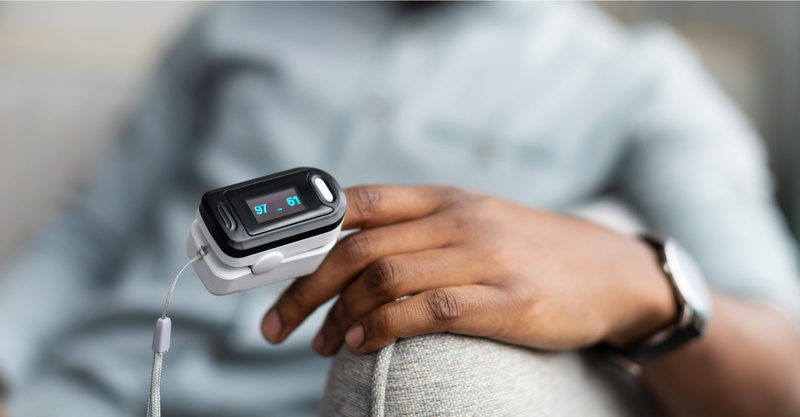Key Points
- Strep throat is a bacterial infection characterized by a sudden sore and scratchy throat, painful swallowing, and swollen tonsils. It is caused by the Streptococcus bacteria and is highly contagious.
- Prompt diagnosis and treatment with antibiotics are crucial to prevent complications such as kidney problems and heart valve damage.
- Symptoms of strep throat include a raw, sore throat, fever, headache, swollen glands, and white or yellow spots on the tonsils. It may lead to scarlet fever if left untreated.
- Diagnosis is usually done through a rapid strep test or throat culture swab, and treatment involves a course of antibiotics. Over-the-counter pain relievers and home remedies can help alleviate symptoms.
- Preventive measures include frequent handwashing, covering the mouth when sneezing or coughing, avoiding close contact with sick individuals, and refraining from sharing personal items that come in contact with saliva.
What is Strep Throat?
A sore, scratchy throat—that often comes on suddenly—along with painful swallowing and swollen tonsils, are common symptoms of strep throat. Strep throat is a bacterial infection of the throat. Many sore throats are caused by a virus and do not require treatment. However, strep throat is caused by bacteria and is treated with antibiotics. Antibiotics help to eliminate the infection as well as prevent complications of an untreated strep throat infection, such as kidney problems and heart valve damage. Strep throat can occur in people of all ages but is most common in children, according to the Mayo Clinic.
Strep Throat May Also Be Known as
- Streptococcal pharyngitis
- Tonsillitis - strep
- Sore throat - strep
Top Cause of Strep Throat
Strep throat is caused by a strain of Streptococcus bacteria. Strep bacteria are highly contagious and usually spread through direct person-to-person contact. The bacteria can be transmitted through an infected person’s saliva or droplets expelled into the air when a sick person coughs or sneezes, according to Mayo Clinic.
After exposure to strep throat bacteria, symptoms usually appear within two to five days, according to Healthline. Most people catch strep throat by sharing close quarters with a sick person. You may catch the illness from a family member or spouse. Children and young adults can also catch strep throat at their school or daycare.
Possible Symptoms for Strep Throat
Strep throat usually starts with a very raw, sore throat that comes on suddenly, as well as painful swallowing. Other symptoms may include a fever, sore throat, and headache, according to Mayo Clinic. Strep throat usually doesn’t cause symptoms such as a runny nose, sneezing, coughing, or nasal congestion, according to WebMD.
If you have strep throat, your throat might look red and raw. White or yellow spots could develop on your tonsils, and the glands in your neck might swell. You may experience nausea, vomiting, or chills, according to Mayo Clinic. Strep throat can make swallowing painful. People with strep throat could lose their appetite or find it difficult to eat regular meals, according to Healthline.
Strep throat can also develop into a condition called scarlet fever. Symptoms of scarlet fever include a sore throat, high fever, and a bright red rash on the face, arms, and trunk. Left untreated, scarlet fever can cause permanent damage to your heart or kidneys, according to Mayo Clinic.
Strep Throat Diagnosis and Testing
If you or your child has strep throat symptoms, you can see a primary care provider, a pediatrician (for your child), or you can go to an urgent care center.
At the appointment, a healthcare provider will ask about your symptoms, do a physical exam, and check your throat, nose, and ears. If the provider suspects strep throat, they may take a throat swab to determine if your sore throat is bacterial (strep throat) or viral. A rapid strep test will quickly show results. If the rapid test is positive for bacteria, the healthcare provider will prescribe a course of antibiotic treatment. If the test is negative, the provider may take a throat culture swab. A throat culture is sent to the lab to see if group A strep bacteria grows. It takes a few days for results to come back, but it may find an infection that the rapid test missed. This is especially important in children and teenagers since they are more likely to get rheumatic fever (a condition that causes inflammation in the heart, joints, skin, and brain) or other complications from untreated strep infections—whereas adults are generally not at risk for rheumatic fever. If the throat culture is positive, the provider will prescribe an antibiotic.
Can I go to urgent care for strep throat?
If you have symptoms of strep throat, an urgent care center is an excellent choice for medical care. You can quickly see a healthcare provider, who is well-equipped to diagnose and treat strep throat. Urgent care centers provide quality care, have evening and weekend hours, and offer other conveniences such as online booking and registration.
Possible Strep Throat Treatment Options
Once a strep test has confirmed the diagnosis of strep throat, doctors usually prescribe antibiotics to treat strep throat. Left untreated, strep throat could lead to life-threatening health complications, including pneumonia, meningitis, or toxic shock syndrome, according to MedicineNet. Fortunately, antibiotics can help clear up the infection, halt the spread of strep throat, and reduce your risk of developing complications.
If your doctor prescribes antibiotics, be sure to take the medication as directed. Don’t skip doses, and don’t stop taking the medication without your doctor’s permission. Don’t share the medicine with friends or family members—even if they have the same symptoms. Failing to take your medication correctly can result in your infection coming back, according to Mayo Clinic.
According to the Centers for Disease Control and Prevention (CDC), some examples of commonly prescribed antibiotics for strep throat include a 10-day course of amoxicillin, penicillin, or Keflex (cephalexin)—or a five-day course of Zithromax (azithromycin).
You can catch strep throat more than once, according to the CDC. If you recover from strep throat, it’s important to stay away from other people who have strep, or you could contract the illness again. It’s also important to sterilize or replace personal care items such as toothbrushes after you recover from strep throat.
Once you start taking antibiotics, you usually start to feel better within a few days, according to the CDC. In the meantime, you might be able to alleviate your symptoms with over-the-counter pain relievers, throat lozenges, or throat sprays. Gargling with warm salt water can also help clear up the infection and provide relief from painful symptoms, according to Healthline. Ask your doctor or pharmacist for other recommendations for at-home treatments.
Questions Your Doctor May Ask About Your Strep Throat
- How long have you had a sore throat?
- Is it painful to swallow? What about eating?
- Do you have a fever?
- Is there a rash anywhere on the body?
- Is your sore throat getting worse or better?
- Do you experience cold symptoms, such as sneezing or a runny nose?
- Does anything make your symptoms better or worse?
- Has anyone in your family, school, or workplace been sick with strep throat?
4 Ways to Prevent Strep Throat
1. Wash Your Hands Frequently
Regular handwashing and good hygiene can help prevent the spread of illnesses like strep throat. Scrub your hands thoroughly with soap and hot water for at least 20 seconds, according to the CDC. Use a clean cloth or paper towel to dry your hands. Be sure to wash your hands before eating and after using the bathroom. You should also wash your hands before and after touching your face.
2. Cover Your Mouth When Sneezing or Coughing
If you need to sneeze or cough, cover your mouth. It’s best to sneeze or cough into your elbow or upper arm rather than your hands, according to the CDC. If you must sneeze or cough into your hands, wash them right away. Encourage family members and young children to cover their noses and mouths when sneezing or coughing. This helps prevent the spread of illness.
3. Stay Away From Sick People
Avoid close contact with anyone who is sick. If someone in your family is sick, it might be best to isolate them in their bedroom or another area away from the rest of the family, according to WebMD. Try to keep your distance from coworkers or classmates who are ill—encourage those who are sick to stay home until they are no longer contagious.
4. Don’t Share Drinks, Toothbrushes, or Other Personal Items
The germs that cause strep throat can be transmitted through saliva. To avoid catching strep throat, don’t share cups, straws, or silverware. Avoid sharing any personal items that might come in contact with your saliva, such as toothbrushes or lipstick, according to the CDC.
Frequently asked questions
What causes strep throat?
Strep throat is caused by a strain of Streptococcus bacteria. It spreads through direct person-to-person contact or through saliva or droplets expelled when an infected person coughs or sneezes.What are the symptoms of strep throat?
Symptoms of strep throat include a sudden sore and scratchy throat, painful swallowing, swollen tonsils, fever, headache, and a raw, red throat with white or yellow spots on the tonsils.How is strep throat diagnosed?
Strep throat is typically diagnosed through a physical exam and a throat swab. The throat swab helps determine if the infection is bacterial or viral.What are the potential complications if strep throat is left untreated?
If left untreated, strep throat can develop into scarlet fever, which can cause permanent damage to the heart or kidneys.How is strep throat treated?
If strep throat is confirmed, antibiotics are usually prescribed to eliminate the infection and prevent further complications.What preventive measures can be taken to avoid strep throat?
Preventive measures include regular handwashing, covering the mouth when sneezing or coughing, avoiding close contact with sick individuals, and not sharing personal items that might come in contact with saliva.What should I do with my personal care items after recovering from strep throat?
It's recommended to sterilize or replace personal care items such as toothbrushes after recovery from strep throat to prevent reinfection.How quickly can symptoms appear after exposure to the Streptococcus bacteria?
Symptoms of strep throat usually appear within two to five days of exposure to the bacteria.
Solv has strict sourcing guidelines and relies on peer-reviewed studies, academic research institutions, and medical associations. We avoid using tertiary references.










